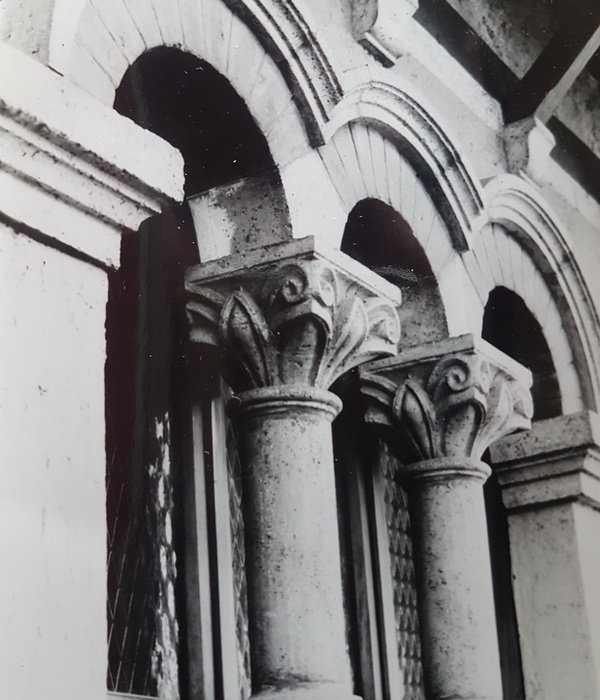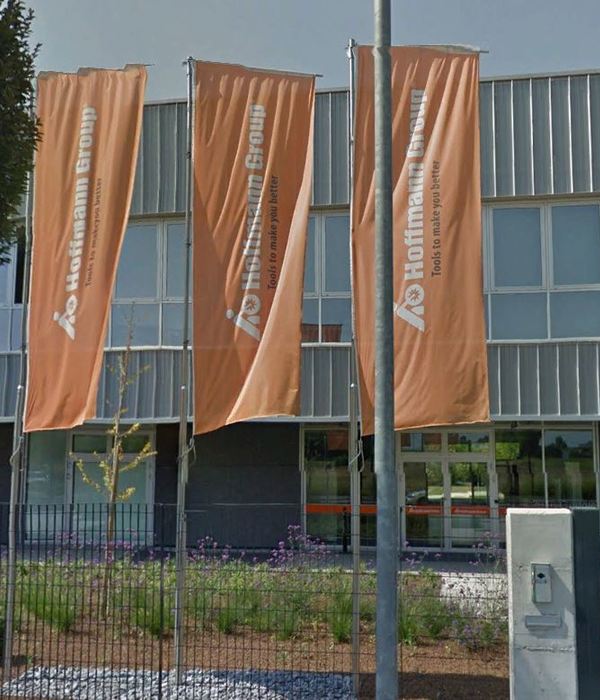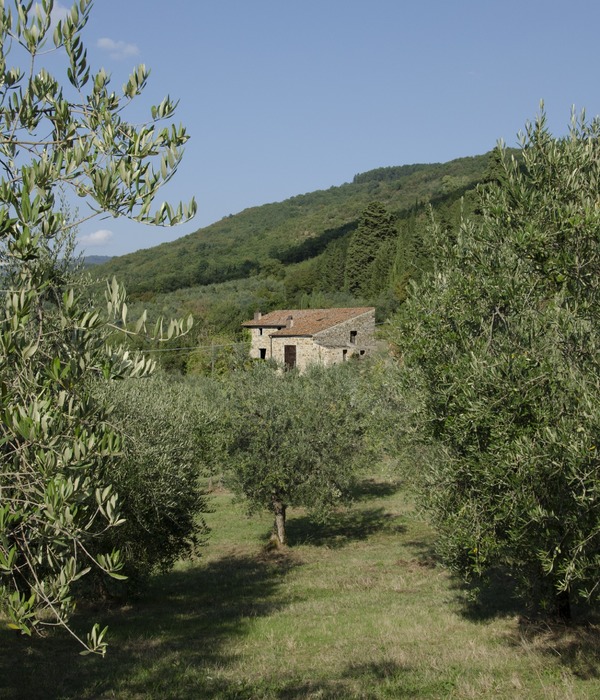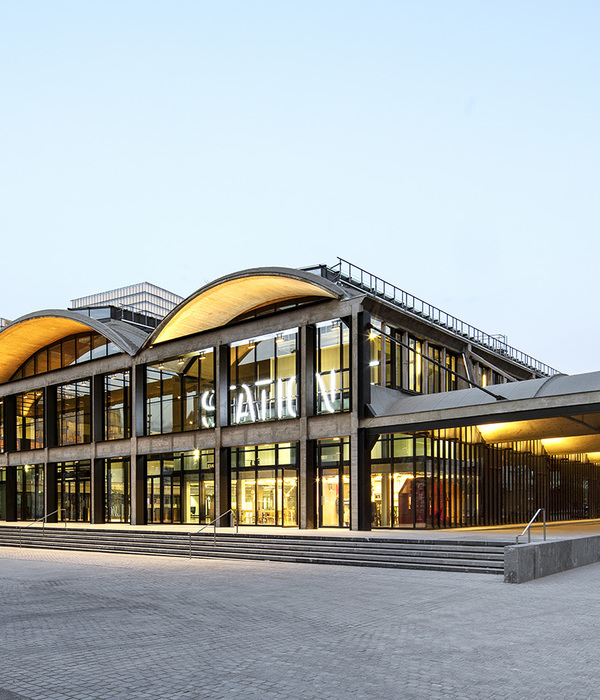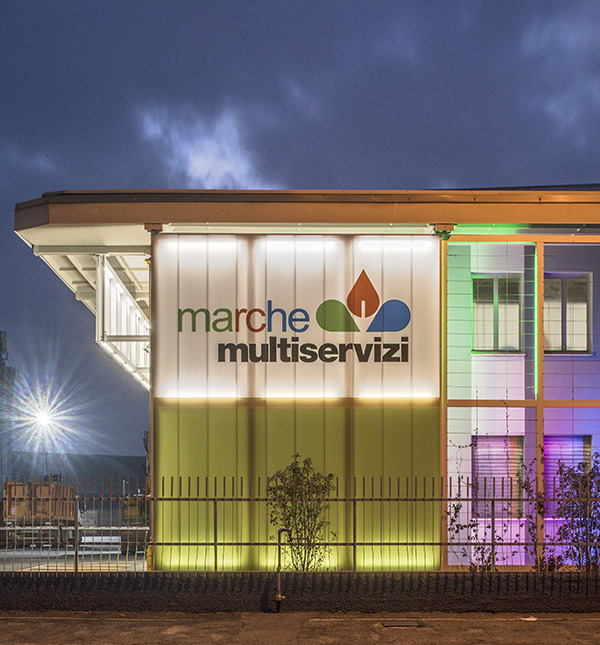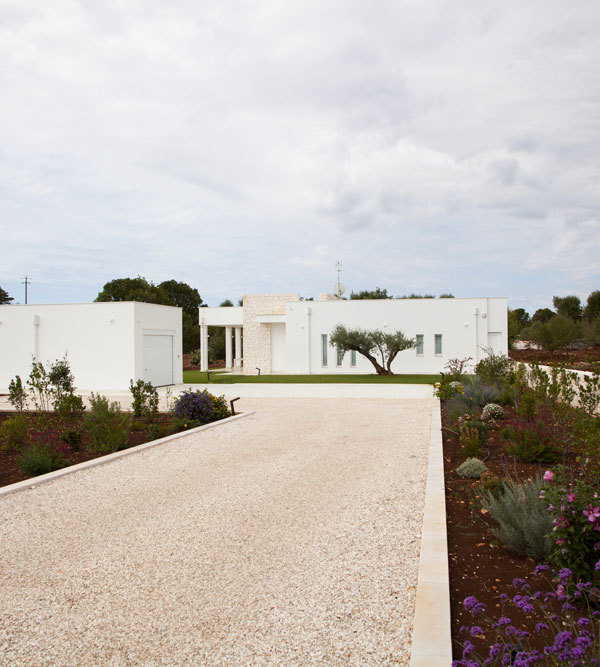这是一个小礼拜堂,仅服务于一群特殊的访客——Missionário Pio Sociedade de São Paulo学院兄弟会的成员。项目的设计基于如下几个原则:它应该位于众多住户的中心;它是祈祷和交流的空间;它是相对私密的也是集体共有的。
This is a chapel, or a small church, built in a particular house for particular people – the brotherhood of Instituto Missionário Pio Sociedade de São Paulo. The project brief is based on principles that don’t necessarily concur: it should be the central area for a house of many homes; a space for prayer and for communication; a place of intimacy as well as assembly.
▽入口立面 the entrance facade
这座献给耶稣的教堂,位于里斯本郊外Apelação的Quinta Rainha dos Apóstolos。这一地区充满田园风情,可以俯瞰Tagus河宽阔的河谷,建立于1970年代的学院就坐落在这里。学院已有的建筑包括两座4层高的楼房,原本被用作仓库。这也是教堂所在的位置,同时也是城镇的中心,人们生活、工作的地方离它很近。教堂因此被视为学院的中心,无论地理还是象征意义上。它为兄弟会的成员提供联络情感之地外,还通过公开的宣教来将福音散播到社区当中。
The chapel, consecrated to Jesus Master, sits within Quinta Rainha dos Apóstolos, in Apelação, on the outskirts of Lisbon. This is a rural plot, overlooking a broad valley open to the river Tagus, where the Institute has been located since the 1970s. The existing complex includes a pair of long 4-storey blocks sitting on a ground-floor podium, originally used as a warehouse. This was the area chosen to locate the chapel, taking advantage of its central position in relation to the spaces where to live, to work, to welcome and to pray. The chapel therefore operates as the heart of the Institute, both physically and symbolically; it provides the link between members of the brotherhood and reaches the wider lay community through their publishing/ missionary activities.
▽教堂给周围建筑的关系, 教堂与西侧的4层建筑 the relationship between the chapel and the four stories building to West
▽教堂与东侧的4层建筑 the relationship between the chapel and the four stories building to east
项目重新利用原有建筑并赋予它新的意义。教堂的设计朴素而严谨,体量简洁有力、自然光的运用纯洁而神圣,建筑材料的使用内敛而稳重。混凝土结构被保留,外表有些粗糙却不突兀。主房间被设计成为一个宽敞明亮的整体,没有过多的人工痕迹和装饰:只有一张有绘有耶稣的背景墙,用以告知和加强空间宗教和神学的氛围
The project reuses the existing building and aims to provide it with a new meaning; this is done through a process of austere and rigorous designing, which relies on the simplicity of volumes, natural lighting and inherent qualities of proposed materials. The concrete structure is retained, bare and imperfect but suitable nevertheless, and somehow up-lifted by the new context. The room is revealed as a whole and wide space, without artifice or excess: a backdrop for the liturgical fittings to enhance and impart with a sacred and theological sense.
▽走廊空间 corridor
▽走廊空间 corridor
▽主房间是一个整体, 从东向西看the room was designed to be a whole. View from east to west
▽从西向东看,可以看到有绘画的墙壁 view from weat to east . a backdrop with painting
▽从南向北看,可以看到建筑外的花园 view from south to the garden to north
教堂的中间是圣坛,由坚固的木料制作而成,周围并没有划定圣所,寓示着上帝面前人人平等。围绕着圣坛和讲台,根据不同宗教仪式所要营造的亲密感不同,空间有多种布置方式。兄弟会内部的仪式上,人员围绕着圣坛,身后是花园,神父面北;普通的仪式则座椅布置在圣坛边上,长椅布置在西侧,神父面西;节日的仪式则将座椅布满整个空间,神父面北。
Among those, the central altar stands out. This is built in solid timber, with no delineation of presbytery – a place for all, without hierarchies. In conjunction with the pulpit, this allows a wide range of layouts and different degrees of intimacy for liturgical celebrations: private celebrations with community brothers gathered around the altar with the garden behind (orientation north / south); regular celebrations with lay assembly (placed along the longitudinal axis with the celebrant facing west); and festive celebrations that fill the chapel (orientation north / south).
▽中间的圣坛 the central altar stands out
▽讲台和十字架 the pulpit and the cross
十字架被设计为仪式和建筑的一部分。它与混凝土结构通过一个联锁的装置相连,在仪式过程中可以被取下,标志着开始或结束。
The Cross is designed as an integral part of the celebrations and the building. It is physically connected to the concrete structure through an interlocking joint, but can be disengaged to be carried in procession, thus marking the beginning and the end of celebrations.
▽可以安装和取下的十字架 the cross is physically connected to the concrete structure which can be disengaged when nacessary
室内有两件精细的木工构件,都具有宗教仪式的功能。其一是西侧的祭衣间,包括一间朝向花园开口的忏悔室;其二是南侧的墙壁,上面绘有耶稣十字架。这面墙面并非未将空间完全封住,视线穿过墙壁后的走廊,可以看见学院原有的建筑。
The internal space is strongly marked by two joinery elements, both with clear liturgical function: the sacristy to the west side, which includes the confessional booth open to the garden, and the partition wall to the south side, which frames the depictions of Jesus Way of the Cross. This wall does not enclose the chapel completely: it allows for the room to be perceived as a whole, through glimpses of the corridor behind it providing connection between the existing buildings.
▽南侧墙壁上的十字架 the partition wall to the south side frames the cross
▽西侧的祭衣间 figure above :the sacristy to the west side
▽祭衣间内部 inside of the sacristy
在建筑北侧复制了传统教堂的拉丁十字平面。这里不仅仅被设计成一个花园,而是一个进行室外祷告的区域。绿植和水面塑造了简洁有力的空间。教堂的公共入口位于南侧,木门上镌刻着一个十字,门的东侧有一只专门设计过的门铃。
The external space to the north replicates the volume of the chapel. More than a mere garden, this area is designed as an extension to the praying space. Part of the whole through geometry and materiality, it adds water and vegetation to the simplicity of the set. Public access to the chapel is granted from the south, identified by a timber door with an engraved cross and a bell, both designed in line with the general principles of the project.
▽在建筑北侧复制了传统教堂的拉丁十字平面 The external space to the north replicates the volume of the chapel.
▽水面加强了空间的神圣感 water enhances the the sense of sacre
▽入口立面上的铃铛 the bell on the south facade
▽铃铛设计图纸 the bell
设计之初,指导原则之一是要体现兄弟会对这座建筑的贡献。建筑中原创的绘画由Bartolomeu de Gusmão就地完成,这些墙上和木板上的作品在空间与宗教团体间建立了强烈的联系。同时,空间和充斥其中的元素向使用者传达了一个清晰而重要的信息——这座建筑是为了归属和分享而存在的。
The brief required depictions of particular devotions of this brotherhood to be included. These were considered from the start as part of the design, instead of later additions. Original art work was executed in situ by Bartolomeu de Gusmão, on walls and joinery surfaces, creating an intense and global relationship between the space and the religious community. Together, the space and the elements that populate the space convey a clear and critical message to its users – reinforcing the sense of belonging and sharing that imbued the original commission.
▽平面图 plan
▽剖面图 section
Year :2015
Consultant:Paulo Pires de Vale / Nuno Gusmão
Comunication:P-06 atelier
area – 350 ㎡
English Text :
Site Specific Arquitectura
MORE:
Site Specific Arquitectura
,
更多请至:
{{item.text_origin}}




